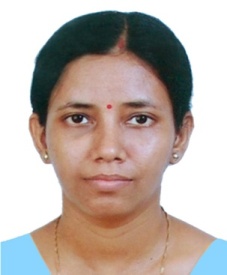| Course Status : | Completed |
| Course Type : | Elective |
| Language for course content : | English |
| Duration : | 12 weeks |
| Category : |
|
| Credit Points : | 3 |
| Level : | Undergraduate/Postgraduate |
| Start Date : | 24 Jan 2022 |
| End Date : | 15 Apr 2022 |
| Enrollment Ends : | 07 Feb 2022 |
| Exam Date : | 24 Apr 2022 IST |
Note: This exam date is subject to change based on seat availability. You can check final exam date on your hall ticket.
Week 1: Types of Spread Spectrum Systems: Different Spreading Techniques will be addressed
Week 2: Spreading Sequences: Generation Mechanism of sequences and Waveforms
Week 3: Properties of Spreading Sequences: Code Properties and comparative studies

Debarati Sen is presently an Assistant Professor at the G.S.S. School of Telecommunications, IIT Kharagpur since 2013. She, a National Doctoral Fellow, completed her PhD inTelecommunication Engineering from IIT, Kharagpur in 2010. During 2011-2012, she was a Postdoctoral Researcher with the Department of Signals and Systems, Chalmers University of Technology, Sweden. She was with Samsung Research, Bangalore, India, firstly as a Chief Engineer during 2009-2011 and then as a Senior Chief Engineer during 2012-2013. A university topper in her Master in Engineering, she possesses experience at different levels in different institutions/industries throughout her career.
Her primary research interests are in the broad areas of Wireless Communications and Optical Communications, mostly, on 5G Communications, Millimeter Wave (mmWave) Communications, Large MIMO Systems, Cloud RAN, Short Range Communications, Green Communications, and Coherent Fiber Optical Communications. More specifically, in mmWave Communications, the focus is on energy efficient Radio Architecture and MAC protocol design, devising Beam-forming Algorithm, Performance and Coverage Analysis of Networks. In Large MIMO, she focuses on Synchronization and Channel Estimation, Joint Decoder Design, Cross Layer Optimization, Resource control issues in massive MIMO. Dr. Sen’s research projects are supported by a variety of Govt. organizations including MHRD, BEL, DeitY, and external collaborators like AIRBUS, Samsung, DAAD (Germany) etc. She has several granted and applied Patents to her credit and published extensively in International Journals and Conferences of repute.
She is an editorial board member of two International Journals. Her professional involvement also includes: Member, Mentor Council for NCVT, Govt. of India; Chairing Technical Sessions and TPC membership of top tier IEEE Conferences; Reviewer of IEEE Journals and Conference papers; Delivering invited lectures in academia/industry. She received Best Paper Award at Samsung Tech. Conference 2010, IEI Young Engineers Award 2010, Award of Excellence by Samsung Research, Bangalore in 2010, IETE N.V.G. Memorial Award 2013, DAAD-IIT Faculty Exchange Fellowship 2014 etc. She is a member of IEEE.
DOWNLOAD APP
FOLLOW US